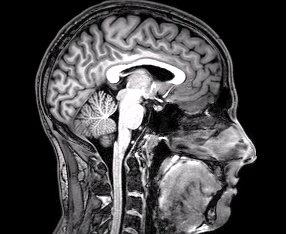Breakthrough Study Links Smell and Sight Changes to Early Parkinson's Detection

A groundbreaking study led by researchers at the Champalimaud Foundation in Portugal has unveiled a potential method for detecting Parkinson's disease years before traditional symptoms manifest. Published in the *Journal of Cerebral Blood Flow and Metabolism* on June 22, 2025, the research highlights how alterations in the senses of smell and sight may serve as early indicators of the neurodegenerative disorder, which affects millions worldwide.
Parkinson's disease, often recognized for its motor symptoms such as tremors and stiffness, begins its insidious onset with non-motor symptoms, often years prior to diagnosis. According to Dr. Noam Shemesh, leader of the Preclinical MRI Lab at the Champalimaud Foundation, individuals may begin to lose their sense of smell and experience visual disturbances five to ten years before the appearance of motor-related symptoms. This delayed diagnosis can complicate treatment options and overall disease management.
The research team, which also included experts from the University Medical Center Göttingen in Germany, utilized ultra-high-resolution functional magnetic resonance imaging (fMRI) to study genetically engineered mice that overproduce alpha-synuclein, a protein implicated in the development of Parkinson's disease. The fMRI scans, conducted with a powerful 9.4 Tesla machine, revealed significantly reduced brain activity in regions responsible for processing olfactory and visual stimuli compared to healthy control mice.
Dr. Tiago Outeiro, a Parkinson's specialist, emphasized the novelty of this approach, stating, "The analysis of both sensory modalities simultaneously is quite rare in current research. We are hopeful that these findings will pave the way for earlier detection in humans."
The study also incorporated additional tests to confirm its findings. Researchers employed pseudo-continuous arterial spin labeling (pCASL) to measure blood flow and analyzed levels of c-FOS protein, which indicates neuronal firing. Results showed that the Parkinsonian mice exhibited over a 50% decline in brain activity and approximately a 10% decrease in blood flow in response to sensory stimuli. These findings underscore the notion that the decline in sensory processing may be linked directly to neuronal degradation rather than just vascular issues.
In a broader context, the implications of this research extend beyond early detection. As the disease progresses, alpha-synuclein accumulates and forms Lewy bodies, disrupting neuronal communication and leading to significant cognitive and motor decline. The insights gathered from this study not only hold promise for early diagnostic tools but also suggest potential intervention strategies that could slow the progression of the disease before significant damage occurs.
Experts agree that if similar patterns of reduced sensory processing can be identified in humans experiencing early loss of smell or sight, healthcare providers could gain a critical tool for early intervention. Dr. Shemesh expressed optimism for future research, stating, "This study opens avenues for more extensive investigations into how early changes in sensory processing could serve as a foundation for developing new diagnostic criteria and treatment plans for Parkinson's disease."
The research was funded in part by the €200,000 Mantero Belard Award from Santa Casa da Misericórdia de Lisboa, enabling the use of advanced imaging technology crucial for this groundbreaking study. As researchers continue to explore the connections between sensory changes and Parkinson’s disease, this work may lead to transformative advancements in how the disorder is diagnosed and managed, potentially improving outcomes for millions at risk.
In conclusion, the discovery that changes in smell and sight can herald the onset of Parkinson's disease represents a significant step forward in neuroscience. Continued exploration of these sensory modalities may ultimately lead to a paradigm shift in the early detection and treatment of one of the most common neurodegenerative diseases worldwide.
Advertisement
Tags
Advertisement





